
This material (and images) is copyrighted!. See my copyright notice for fair use practices.
Men and women have looked up at the sky and wondered about the things they see up there for as long as humans have lived on our Earth. Long ago, the Sun and Moon were mysterious objects that could be seen in the day and night. But the planets and stars were even more mysterious probably because they are so far away that we could only see them as points of light. Unlike the things on the Earth that we can study up close, handle, listen to, smell, and taste, the only thing ancient watchers of the sky had to learn about things in space was their eyes and imaginations. Only very recently in the history of humanity have astronomers been able to extend the reach of our eyes (and our imaginations!).
Galileo pioneered modern explorations in the early 1600's by using a device originally invented for naval operations to explore the heavens. The device he used, of course, was the telescope, an instrument used to gather and focus light. Our atmosphere prevents most of the electromagnetic radiation from reaching the ground, allowing just the visible band, parts of the radio band, and small fractions of the infrared and ultraviolet through. Our eyes can detect the visible (optical) band, so the early telescopes were all built to observe in that part of the electromagnetic spectrum. It wasn't until the 1930's that astronomers began observing with another part of the electromagnetic spectrum---the radio band. The development of space technology has enabled astronomers to put telescopes above the atmosphere and explore all of those places out there using the full range of the electromagnetic spectrum. This chapter covers the basics of telescopes and the effects of the atmosphere on images. Vocabulary terms are in boldface.

Though excellent refractors are still made, the disadvantages of the refractor telescope have blocked the construction of very large refractors for use in astronomical research.


Alas! Despite the advantages of the reflector telescope, astronomers must contend with some minor annoyances.
The second picture shows the path light travels in the 10-meter Keck Telescope at the W.M. Keck Observatory. The objective is composed of 36 hexagonal mirrors put together to act as one large mirror 10 meters across. Clicking on the image will give you more information about this telescope. The small image next to it shows the 10-meter objective. The person in the red clothing at the center gives you a sense of scale.
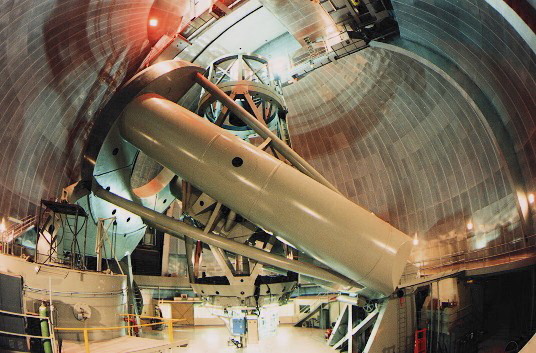
In both the reflector and refractor telescopes, the focus is before the eyepiece, so the image in astronomical telescopes is upside down. Telescopes used to look at things on the Earth's surface use another lens to re-invert the image right-side up. Most reflector telescopes will use a smaller secondary mirror in front of of the large primary mirror to reflect the light to a more convenient viewing spot. Isaac Newton used a flat secondary mirror at a 45° angle to reflect the light to an eyepiece at the side of the telescope tube near the top. Such an arrangement, called a newtonian design is used by many amateur telescopes.
Many reflector telescope use another light path design called the cassegrain design to reflect the light back through a hole in the primary mirror, so that detectors or the eyepiece can be conveniently placed behind the telescope. Most of the large telescopes used for research, including the Hubble Space Telescope, are of this design. Some of the largest telescopes like the Hale Telescope and the Keck Telescope have places to put detectors at the prime focus, where the light from the primary mirror first comes to a focus. The images in reflector telescopes do not have holes or shadows in them because the light rays from the unblocked parts of the primary mirror are all added together when they are focussed together. Even though part of the primary mirror is blocked or missing, there is still plenty of usable primary mirror space to gather the light.
Both types of telescope can suffer from a defect called spherical abberation so that not all of the light is focussed to the same point. This can happen if the mirror is not curved enough (shaped like part of a sphere instead of a paraboloid) or the glass lens is not shaped correctly. The Hubble Space Telescope objective suffers from this (it is too flat by 2 microns, about 1/50 the width of a human hair) so it uses corrective optics to compensate. The corrective optics intercept the light beams from the secondary mirror before they reach the cameras and spectrographs. Fortunately, the Hubble Space Telescope's spherical aberration is so perfect, that it is easy to correct for!
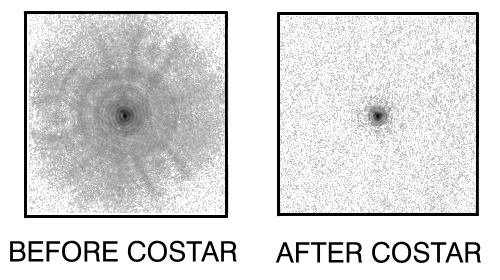
Even before the servicing mission that installed the corrective optics 2.5 years after the Hubble Space Telescope was put in orbit, astronomers were able to get significant results from the telescope. The images were computer-enhanced to correct for the spherical aberration to produce sharper images than from any ground-based telescope. Also, astronomers were able to observe ultraviolet light from celestial objects and fainter objects than could be seen from the ground. However, the computer processing took a long time and the aberration prevented the focussing of most of the light. This meant that astronomers could not see the very faint (and distant) objects they were looking for. Astronomers and the public were very pleased after the corrective optics were installed.
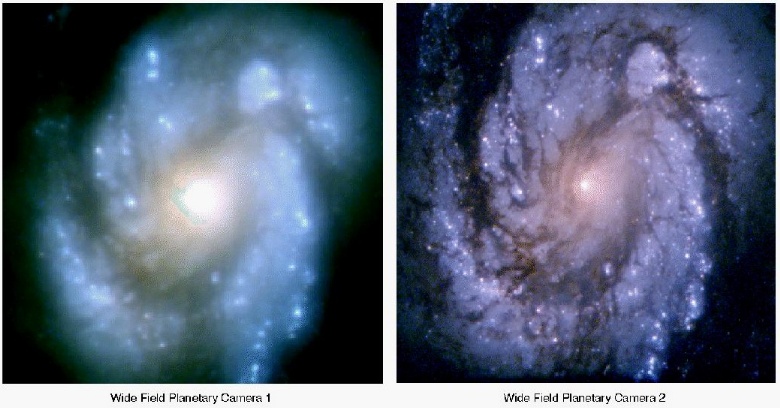
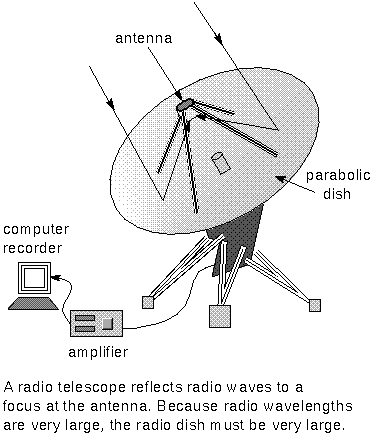
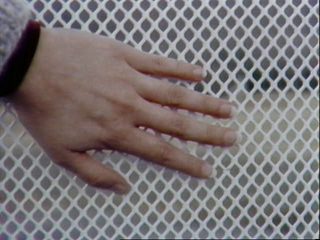 A radio telescope uses a large
metal dish or wire mesh, usually parabolic-shaped, to reflect the radio waves
to an antenna above the dish. An example of a mesh is shown at left. This was
the mesh of the parabolic dish for the former 100-meter radio telescope at
Green Bank, West Virginia. Looking
from underneath the radio telescope, a person could see the clouds in the
sky overhead but to the much longer wavelength radio waves, the metal mesh was
an excellent reflector.
A radio telescope uses a large
metal dish or wire mesh, usually parabolic-shaped, to reflect the radio waves
to an antenna above the dish. An example of a mesh is shown at left. This was
the mesh of the parabolic dish for the former 100-meter radio telescope at
Green Bank, West Virginia. Looking
from underneath the radio telescope, a person could see the clouds in the
sky overhead but to the much longer wavelength radio waves, the metal mesh was
an excellent reflector.
The signal from the antenna is sent to an amplifier to magnify the very faint signals. At the last step, the amplified signal is processed by a computer to turn the radio signals into an image that follows the shape of the radio emission. False colors are used to indicate the intensity of the radio emission at different locations. An example is shown below for Jupiter. Charged particles in its magnetic field produce a large amount of radio energy in donut-shaped regions around its center. A visible band image of Jupiter is shown below the radio image.
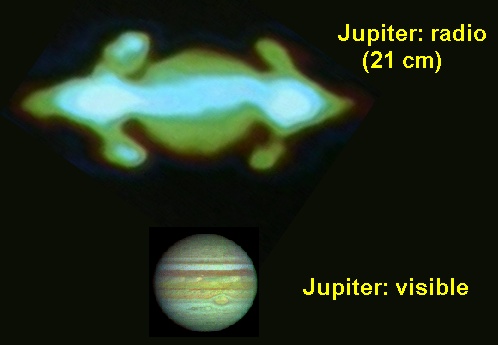
Radio telescopes are much larger than optical telescopes because radio wavelengths are much longer than optical wavelengths. The longer wavelengths means that the radio waves have lower energy than optical light waves. In order to collect enough radio photons to detect a signal, the radio dishes must be very large. Both optical and radio telescope reflectors use a parabolic shape to perfectly focus the light to a point. Increasing the size of the radio dish is also necessary in order to improve the clarity of the radio images. I will discuss the issue of image clarity further in the next two sections.
Radio telescopes detect the emission from cool clouds of hydrogen in the space between the stars. Hydrogen atoms are the most common type of atoms in the universe and much of the hydrogen gas is too far away from any star to produce emission in the optical wavelength band. Therefore, radio telescopes are a vital tool in understanding the universe. I will discuss further the use of radio waves to explore the material between the stars and the structure of our galaxy in the interstellar medium chapter.
| chromatic aberration | objective | reflector |
|---|---|---|
| refractor | spherical aberration | telescope |
![]() Go to
production of telescope powers section
Go to
production of telescope powers section
last updated 07 February 1999